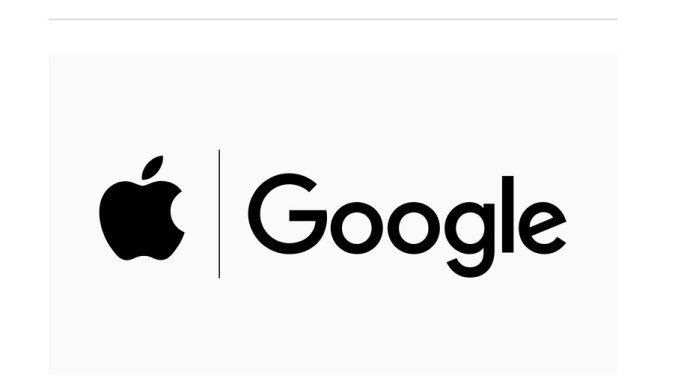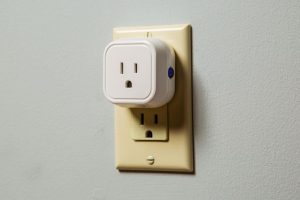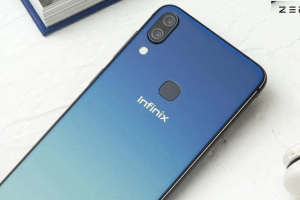Google and Apple are not the best of friends as there has always been fierce competition between iOS and Android. That, however, did not stop them from teaming up to help with COVID-19 (coronavirus) contact tracing by creating a Coronavirus App. The partnership was announced via press releases on both their websites on April 10th, 2020.
The basic workings are that you will opt-in to the app and be notified when you come in contact with someone who tests/tested positive for the coronavirus. That way you can go get tested. The subject of this article is how the app works, expected release date, and challenges the app will face.
Below is an extract from their presentation highlighting the basics behind their idea.

Read More: Top 5 Platforms to Keep Track of COVID-19 Online
1. Demonstration Of How The System Will Function
Let us look at a typical scenario where the app will end up recommending a test via a notification as explained by Google and Apple.

Bob interacts with Alice for the first time and as they have a short conversation, their phones exchange anonymous identifier beacons that change frequently. After a few days, Bob tests positive for Covid-19, after which he inputs a test result code into the app from the public health authority.
Bob then gives permission and his phone uploads the keys for his broadcast beacons from his last 14 days of interaction to the cloud. This is basically a list identifier for people he interacted with.

While Alice was moving around unaware she had interacted with a potentially contagious person, her phone had been continuously syncing to the cloud. That means her phone had been downloading periodical broadcast beacons for everyone who tests positive in her region.
As soon as Bob’s positive test was uploaded, Alice’s phone will find it to match Bob’s anonymous identifier beacon and display a notification. An example notification is “alert you’ve been exposed to someone who has tested positive for COVID-19”. Alice will then be provided with information on what to do next.
Read More: What Ride-Hailing Companies Are Doing During This COVID-19 Lockdown
2. Phase 1: The Coronavirus App
The first part of the project will be an app that is expected to be released this month (May 2020). Because it is an app, it obviously means it is a system where you have to opt-in. This may not be very great as it would depend on a lot of people seeking and downloading the app.
Consequently, because it is an opt-in system, not everyone is will sign up. Also, many people will not even be aware that there exists a Coronavirus app. However, this challenge will be alleviated when they integrate the app into the operating systems.

Read More: COVID-19: 6 Activities That Have Fully Gone Online
3. Phase 2: Integrating Into Operating Systems
Very important is that Google and Apple said that they will eventually have phase 2 where the system will be integrated into the operating systems. This will most likely be done through a software update. It will still be an opt-in situation meaning you will get a pop-up message asking for your consent.
This will clearly stand a better chance of having people signing up. Will this functionality come a little too late? Time will tell.
Read More: COVID-19: How Xente is Supporting Businesses
4. Challenges
i. Not Applicable to All Medical Facilities
The identification process is not perfect because it requires the health agency in your county to provide you with a code to input into your app after you test positive. I appreciate that this is a way of preventing people from trolling by posting false positives to scare other people they have been in contact with.
But what happens if you test positive in a medical facility that does not support this Google-Apple API app? Obviously they cannot provide you with a code for you to input in the app. It means that everyone you have interacted with will have no idea that they need to get tested.

ii. Privacy Concerns
Additionally, the idea has met some considerable resistance in some parts of the world. In the UK, the NHS backed by GCHQ’s National Cyber Security Center prefers having a centralized system. That is opposed to the Google-Apple decentralized system.
A centralized system means the matching process will happen on a computer server. On the contrary, Google-Apple’s decentralized system happens on the user’s handsets. Both schools of thought have reasonable explanations for their preference.
For one, NHS claims using a server-based system will provide epidemiologists with relevant data to study the spreading patterns of the virus. On the other hand, Google and Apple sight that a centralized will inherently undermine people’s privacy.
ii. Battery Life
Another bone of contention is that Google and Apple claim their idea is more gentle to battery life. This should be a major concern for most users. Both systems use Bluetooth handshakes to identify other devices nearby.
However, the Google-Apple matching solution happens without having to wake up the app at all. By contrast, the NHSX’s solution has to wake up the app in the background each time a device is detected nearby. That will definitely eat into the user’s battery life.
All that said, we believe that this will still be better than nothing. Personally, I will download the app when it becomes available; some protection is better than no protection, right? Would you kindly share your opinion with us regarding this idea in the comment section below?
Read More: Covid19: Study from home with these Ugandan e-Learning platforms
Discover more from Dignited
Subscribe to get the latest posts sent to your email.












